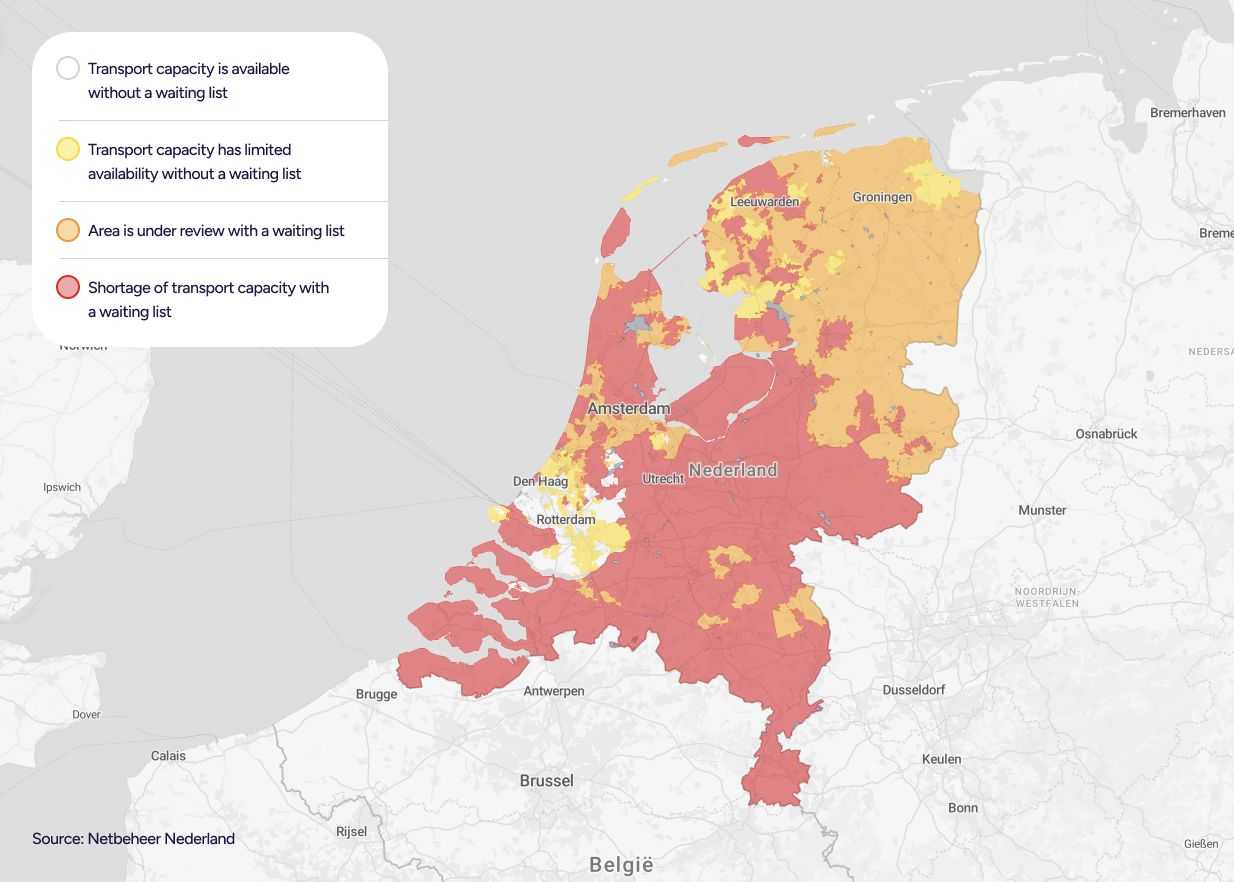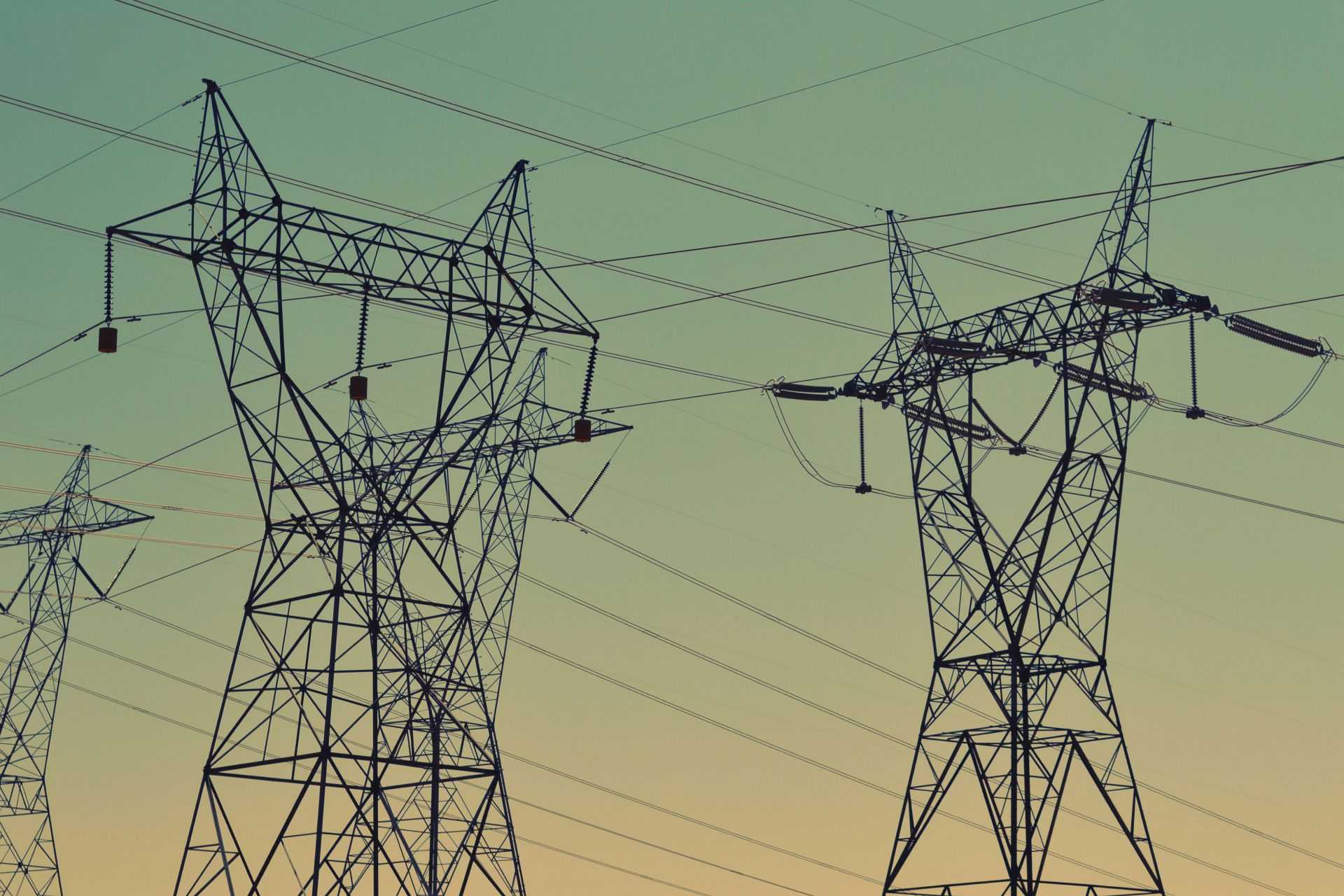When you take a ride on your trusty old bike, you'll quickly be overtaken by an electric one. And if you look around, it seems like every roof has solar panels. Electric car charging stations? They’re popping up everywhere. In the Netherlands, we’re seeing more and more sustainable initiatives. This is great for the environment, but it also brings challenges to the electricity grid. One of these challenges is grid congestion. “Grid con-what?” you might be thinking.
In this blog, you’ll learn what grid congestion is, what the effects are, and how you can help prevent it with Chargee and the Sparky P1 meter.
What is grid congestion?
You can compare grid congestion to a traffic jam: there are more cars on the road than the network can handle. Often at the same time and on the same day. Grid congestion works in a similar way. It means there’s too much demand for electricity at certain times or too much energy being fed back into the grid. This happens when many people use electricity at the same time or when a lot of solar energy is fed into the grid on a sunny day. The electricity grid can’t always handle these peaks because supply and demand are out of balance. This causes overloads, which makes it hard to distribute energy properly.
What are the effects of grid congestion?
So, what problems does grid congestion cause? There are a few negative effects:
- Less use and return of your self-generated solar energy | Do you have solar panels? Sometimes, you might not be able to use or feed all of your generated electricity back into the grid. Here’s why: when the voltage exceeds 253 volts, your solar inverter automatically shuts down. This means you can’t use your own energy and you can’t return it to the grid.
- Delays in getting new connections | In some areas, it’s difficult to get new connections for solar panels, charging stations, or other electric devices. Grid operators can’t handle the demand for electricity, and people have to wait until the grid is upgraded. This can take years.
- Higher costs for everyone (including you!) | Grid congestion forces operators to take extra measures, like laying new cables or installing transformers. These costs are often passed on to consumers, which can lead to higher energy prices in the long run, even if you’re trying to save money on your energy bill.
- Risk of power outages | While grid congestion doesn’t always cause blackouts, the risk increases if we don’t act in time. This is especially true during peak hours or extreme weather, like heatwaves or storms.
Is grid congestion a national problem?
Grid congestion is happening all over the Netherlands, but not equally everywhere. If you live in a less populated area, you can relax for now. Congestion is mainly an issue in regions where many companies and households are installing solar panels or charging stations, like North Holland, South Holland, and North Brabant. The electricity grid in some areas is outdated and wasn’t designed to handle such high demand. Grid operators are working hard to expand and strengthen the grid, but this takes time. That’s why grid congestion will continue to be a problem for the next few years, especially in busy areas.

What solutions are there for grid congestion?
Fortunately, there are several solutions to reduce or prevent grid congestion. Some for the short term and others for the long term. Here are a few examples:
- A larger electricity grid | Grid operators are expanding and upgrading the electricity grid. This means laying more cables and adding transformers to enable new connections.
- Changing consumption habits | It’s important for you to do your part in reducing grid congestion. Smart energy management systems can help you plan your energy use wisely. These systems show you the best times to charge your car or run your washing machine. That’s how you can avoid peak hours, maximize your solar power, and take advantage of dynamic rates. The Chargee app helps you with this.
- Storing energy in a home battery | Another solution is to use batteries to store energy. If you have solar panels, you can store the energy you generate during the day in a home battery. This way, you return less energy to the grid and use the stored energy when you're not generating or when dynamic prices are high.
- Dynamic energy rates | Some energy providers now offer dynamic energy contracts. This means you pay the market price for gas and electricity, which changes every hour. By using electricity when prices are low—and when the grid is less busy—you help prevent peak times. And it’s good for your energy bill too!
Prevent grid congestion with the Sparky P1 meter
Grid congestion isn’t just a problem for businesses - it affects consumers too. The good news? You can also help reduce grid congestion. Chargee’s smart P1 meter, Sparky, helps you manage your energy use wisely. By connecting Sparky to your smart meter and the Chargee app, you get real-time insights into your energy consumption and solar generation. This allows you to adjust your energy use to times when the grid is less busy.
With Chargee and Sparky, you’re part of the solution. You help prevent grid congestion while managing your own energy consumption more efficiently. It’s good for the environment and your wallet! A win-win situation, right?




